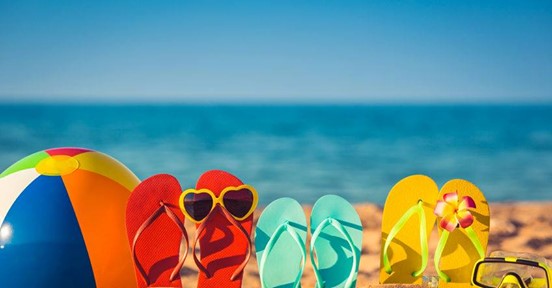Useful tips
Sun exposure: how to get a safe tan

Exposure to sunlight provides a number of health benefits, such as stimulation of vitamin D production, better mood and stress reduction.
However, ultraviolet (UV) rays also generate free radicals that lead to the formation of wrinkles, loss of skin elasticity, changes in body tissues and development of tumors including melanoma. The risk of melanoma is increased in younger children: several studies show that the sunburns experienced during the first years of life increase the risk of developing melanoma in the adult age.
A correct balance between sun-related risks and benefits can be achieved by adjusting the duration and manner of sun exposure according to one’s age and skin type, and always using an appropriate sun protection. In order to avoid sunburns and more serious damage, every subject should protect their skin in a personalized manner. The color of eyes and hair and the skin type are variables that influence our phototype. There are six different phototypes, from 1 to 6. The higher the phototype, the longer is the time of allowed sun exposure before adverse effects – such as erythema and sunburns – are observed. However, even those who are unlikely to develop sunburns should avoid prolonged sun exposure, as it contributes to premature skin aging and increases the risk of developing tumors.
The following tips can be very useful to get a safe tan:
Use sunscreens
Everybody should protect themselves by using a good sunscreen, applying it before sun exposure and repeating application several times during the day. It is essential to choose a sunscreen with a sun protection factor depending on the phototype (but not below SPF 15), with a broad spectrum (to protect against all ultraviolet rays, i.e. UVB, short-wave UVA and long-wave UVA rays), photostable (i.e. does not change when exposed to light), water-proof and sweat-resistant, and non-sensitizing.
Wear a hat
Protecting against sun rays with a sunscreen alone may not be enough. With strong sunlight, children and people with more sensitive phototypes should also use other sun protection methods. A hat with a visor or wide brim to protect also the back of the neck and the ears, preferably made of UV-protection fabric, is an excellent protection against sun rays.
Avoid excessive body exposure
As we spend long periods of time outdoors during the summer season, it is recommended to avoid excessive body exposure: like for hats, there are light clothes available that offer an effective protection against sun rays. Manufacturers of UV protective clothing usually certify this property on their garments’ labels. Finally, remember that dark colors are more protective than light colors, and dry clothes are more protective than wet clothes.
Sunglasses
Sunglasses protect the eyes, iris and delicate skin of the face. Larger frames and wraparound styles are particularly effective because, by extending to the temples, they provide lateral protection against sun rays. Darker or polarized lenses do not necessarily provide increased protection, which actually depends on a chemical substance that coats the lenses regardless of their color. Lenses should protect against at least 99% of UV-A and UV-B rays; some manufacturers’ labels say “UV absorption up to 400 nm”.
Stay in the shadows
With very strong sunlight, the best protection remains staying in the shadows. It is preferable to plan outdoors activities early in the morning or late in the afternoon, i.e. when the intensity of UV rays is usually one third lower than that in peak hours.
Special care for children
Special care should be used to protect children against sun rays. Children are more exposed to sun-related risks, because their skin is very delicate and any damage caused by UV rays has a longer time to develop in subsequent years. Infants under 6 months of age should never be exposed to sun rays: they should be always kept in the shadows whether they are at the seaside or in the city. In older children, apply specific sunscreen products (for sensitive skin and with 30-50 SFP) repeatedly during the day and protect them with a hat and UVA and UVB certified protective sunglasses.
Sun and sports
Those who practice sports activities in the warmer months are exposed to huge amounts of sun rays. Moreover, as sweat contains salt, it makes the skin drier and increases heat, thus contributing to the formation of sunburns. Therefore, it is important to protect the skin with sunscreens and protective lotions that do not leave the skin greasy as they are specially designed to be used during sports activities, and to use appropriate garments.
Contact

Via G.B. Giorgini 16 - 20151 Milano
Tel. 02.3343281 - Fax 02.33496370
email: effetti@effetti.it
web: www.effetti.it - www.makevent.it
Forgotten password
Please enter your email address to receive a message with instructions to recover your login credentials.



